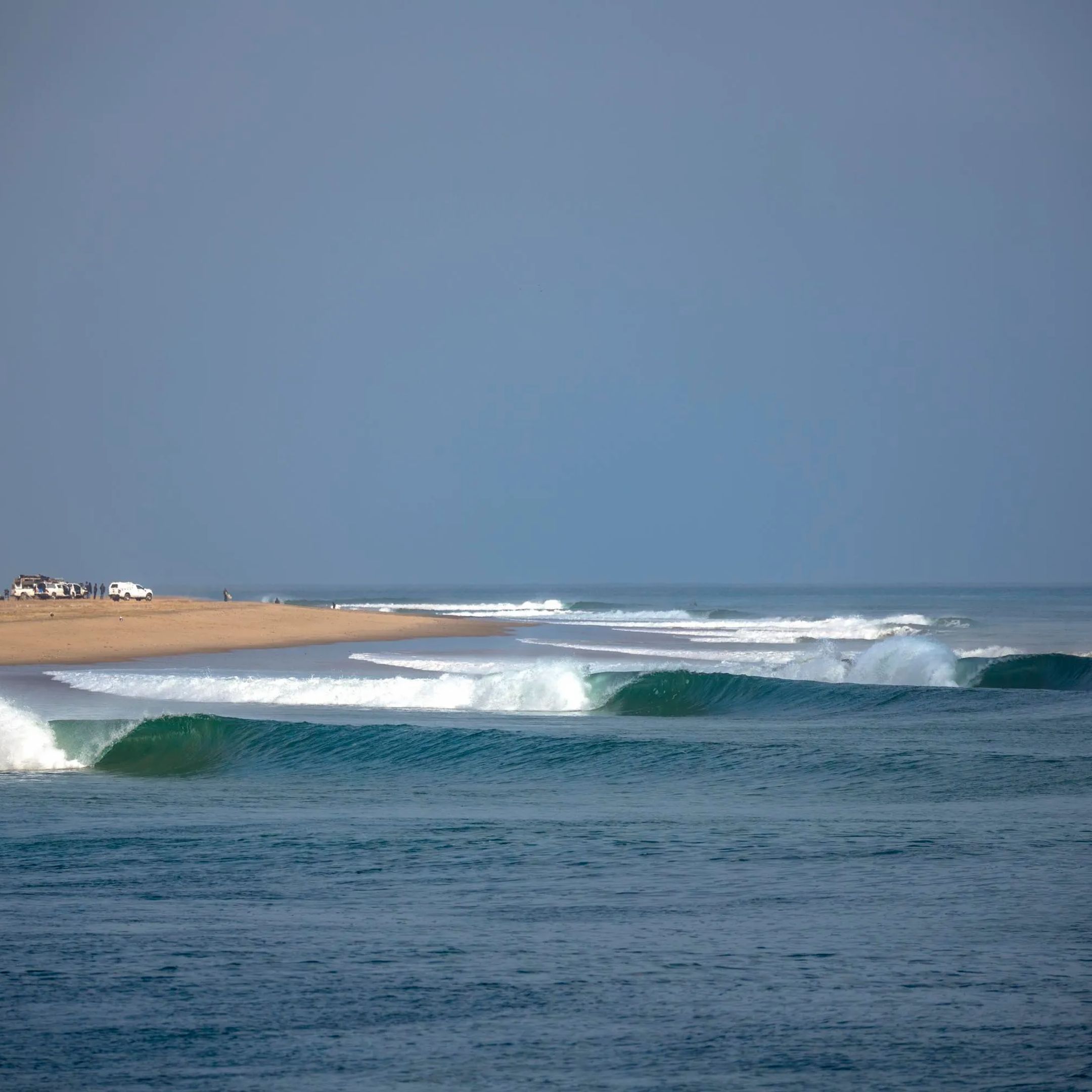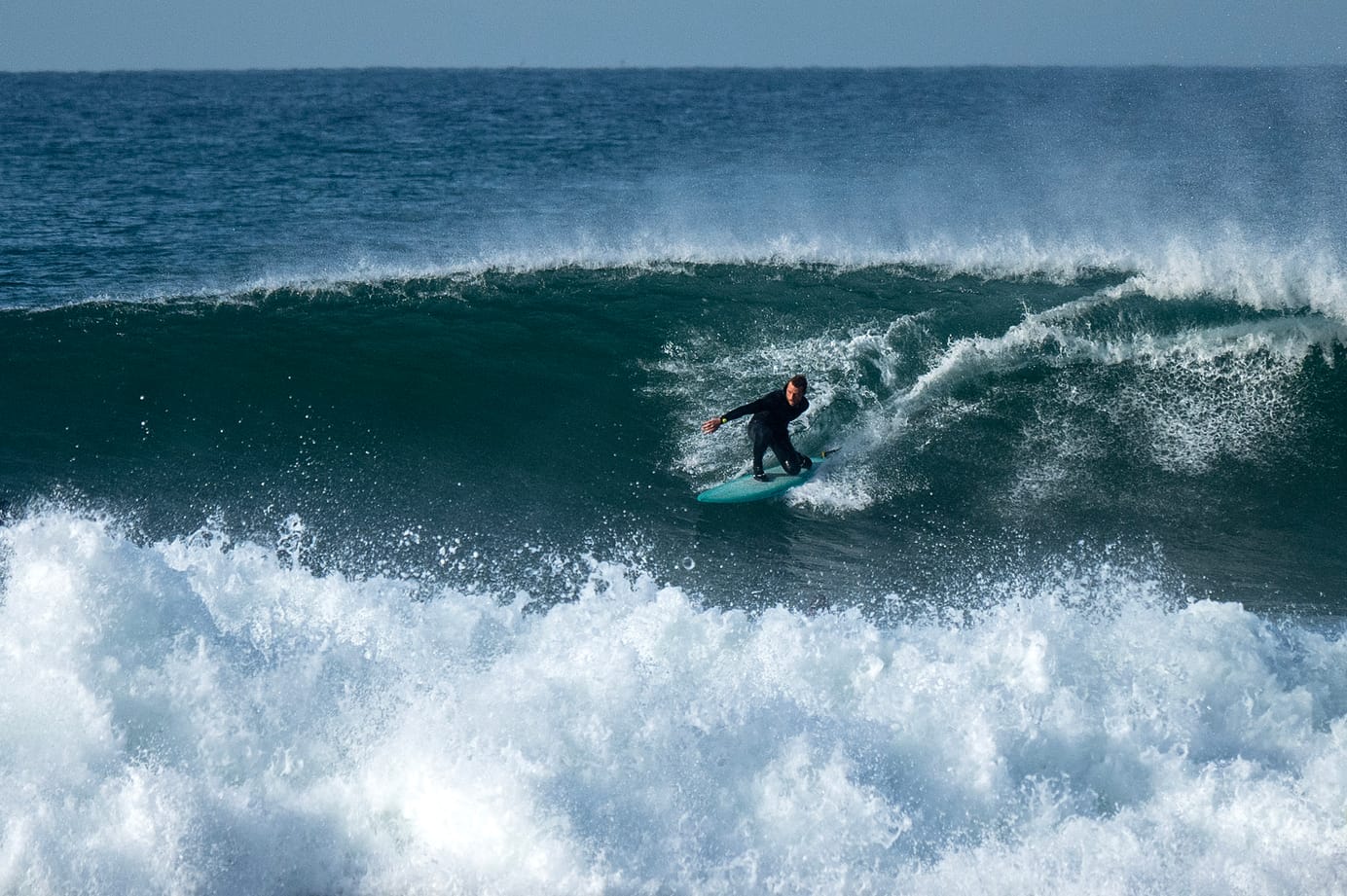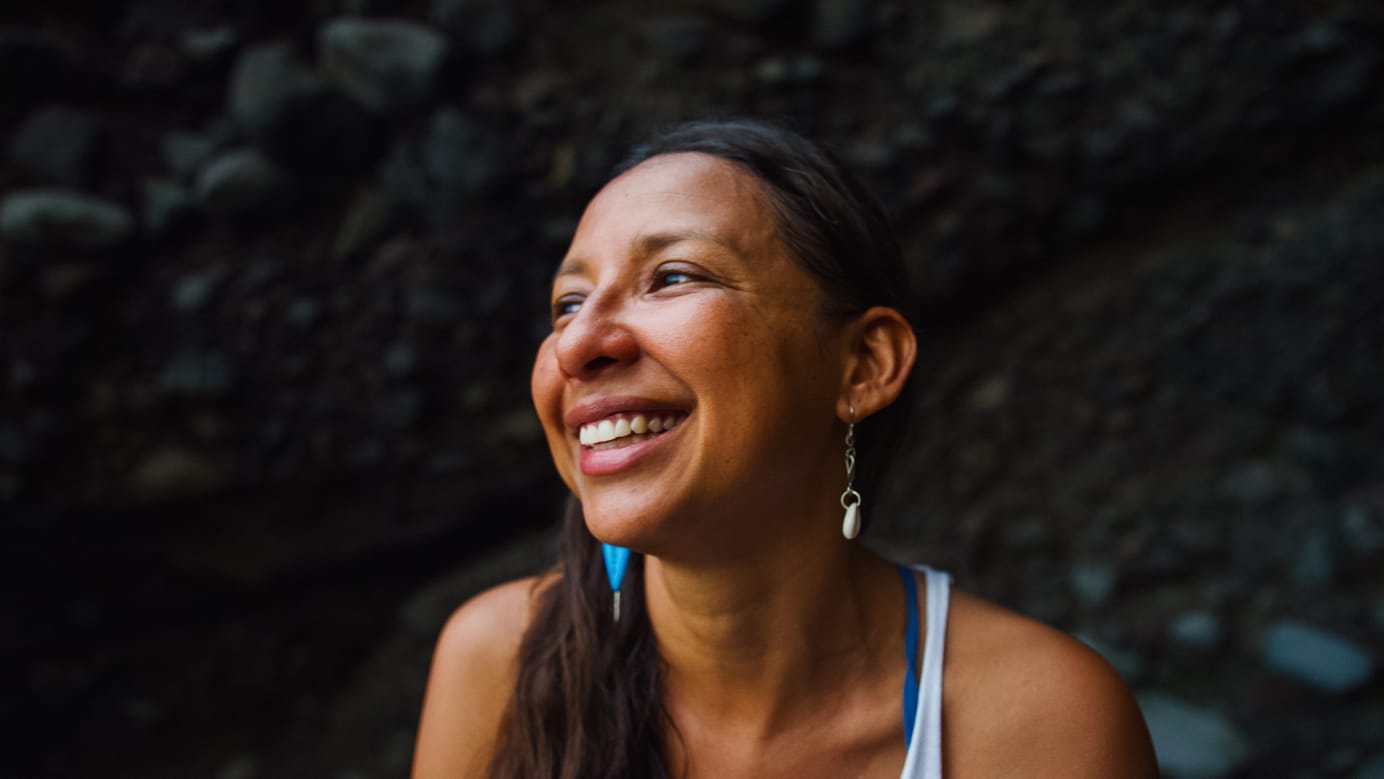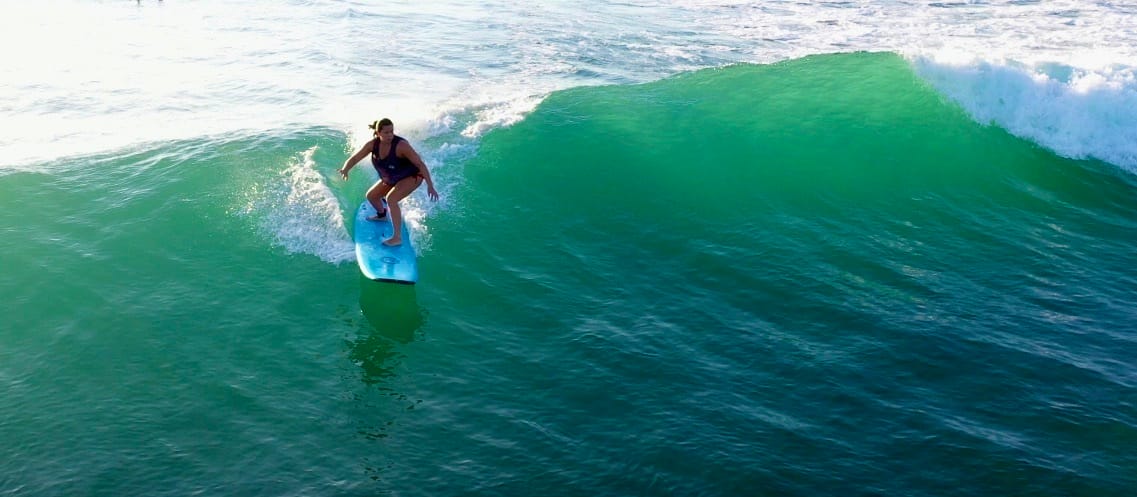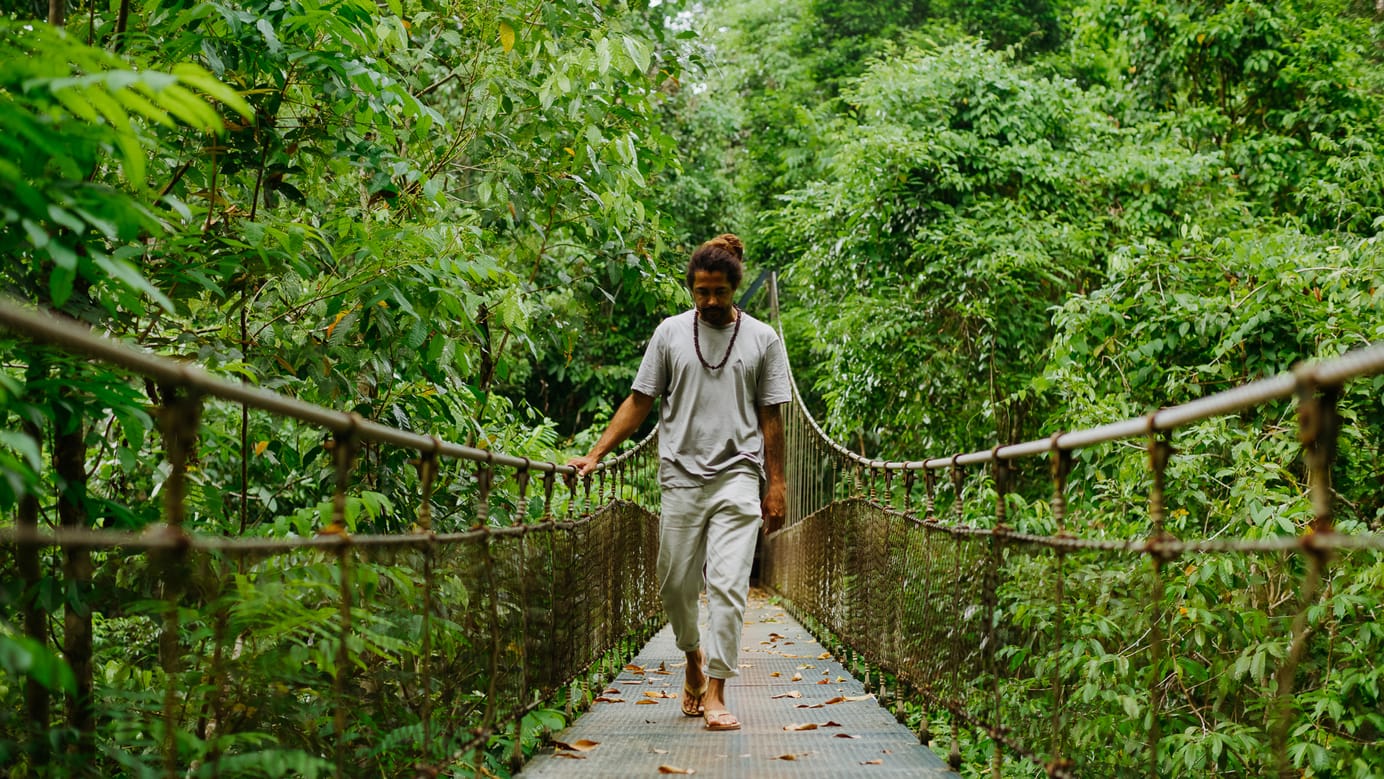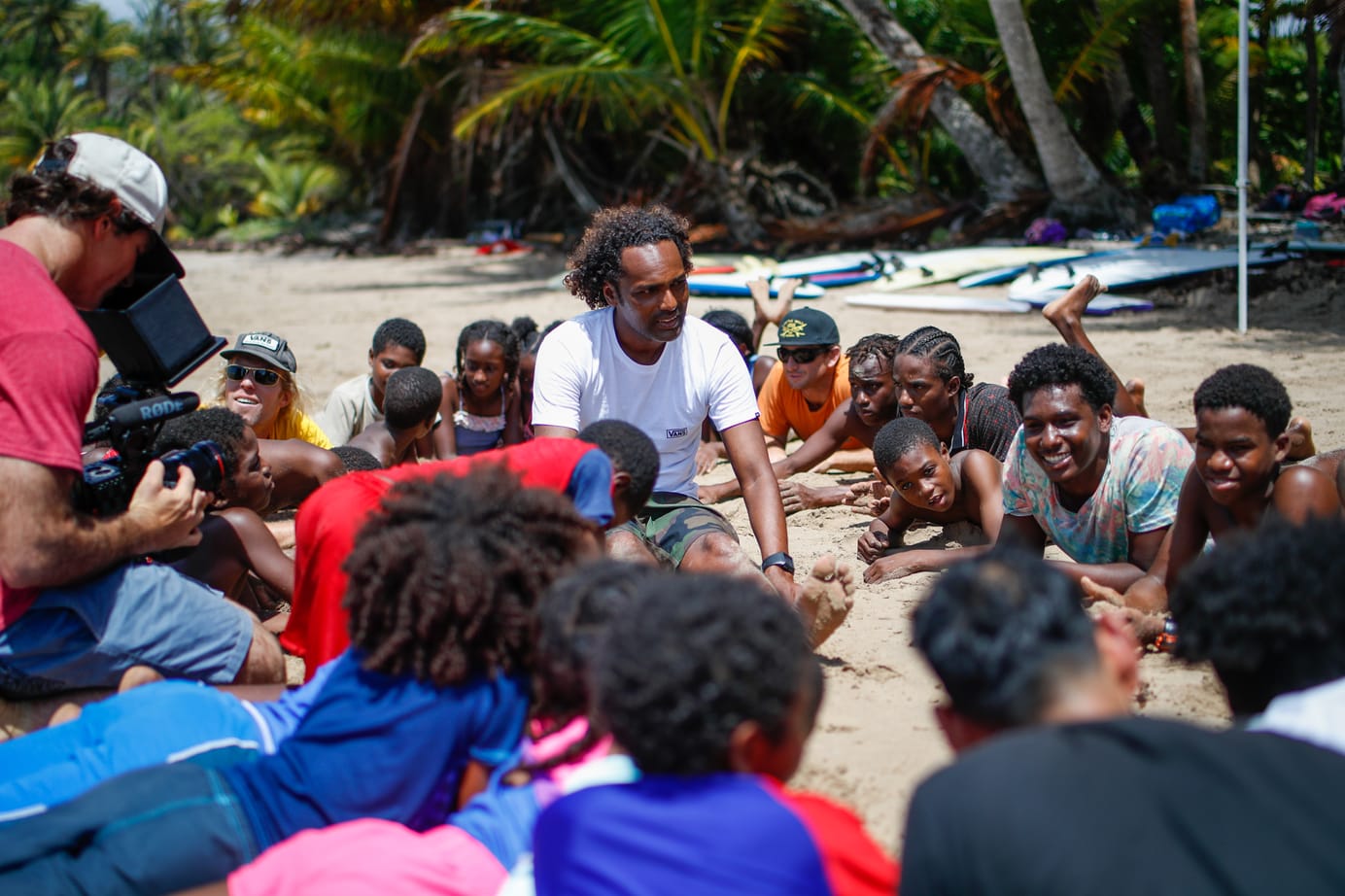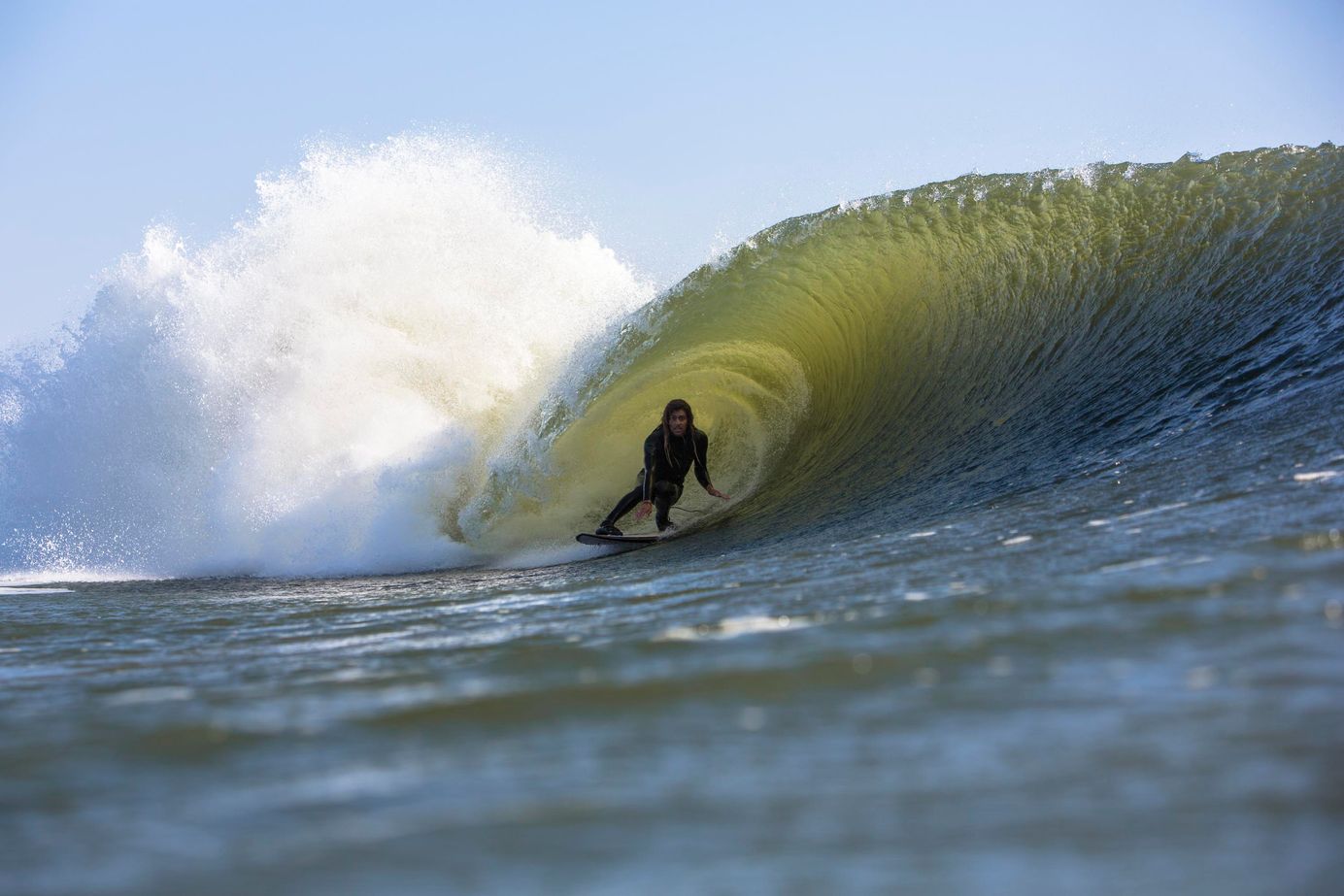
Animating the Skeleton
Some of surfing’s most iconic sessions couldn’t happen without a guide. The following is a conversation with two behind the pivotal Skeleton Bay scene in Craig Anderson’s “Slow Dance.”
Sand and fog and a desert beige, safari vehicle. There could be a song playing on the stereo but it’s inaudible beneath the mighty drone of the V-8. The sound is primal, something terrifying. Alan stomps on the gas so we can all hear the roar. Somewhere in the distance a lioness perks her ears, aroused by the sound. Moments prior, there were blood-red salt flats and cryptic marshes, but now we gallop through sand. And fog. Everyone’s stare remains locked on the windshield, our collective gaze trying to burn through the vapor. There is a line in the dawn light like a false horizon where the fog meets the sand. And suddenly, the sea. Still foggy, the waves invisible. We follow the shoreline down the point and daylight sears away the fog. Whitewater peaks through the mist. Ahead of us, silhouettes limp into view, enshrouded. Neoprene zombies. We rumble closer to find that the zombies are surfers trudging up the point wearing expressions of disbelief and unadulterated awe…
The passage above is from a Surfing Magazine feature some years back called “Abalone Romance,” describing the moments before a particularly memorable swell — one that would capture Craig Anderson riding flawless Skeleton Bay, Namibia in his profile film, Slow Dance. Of course, if the place sounded a little hard to find — what, with the sand and fog and vapor and all — it’s because it was. Still is. You don’t just rock up to “the point” on your own.
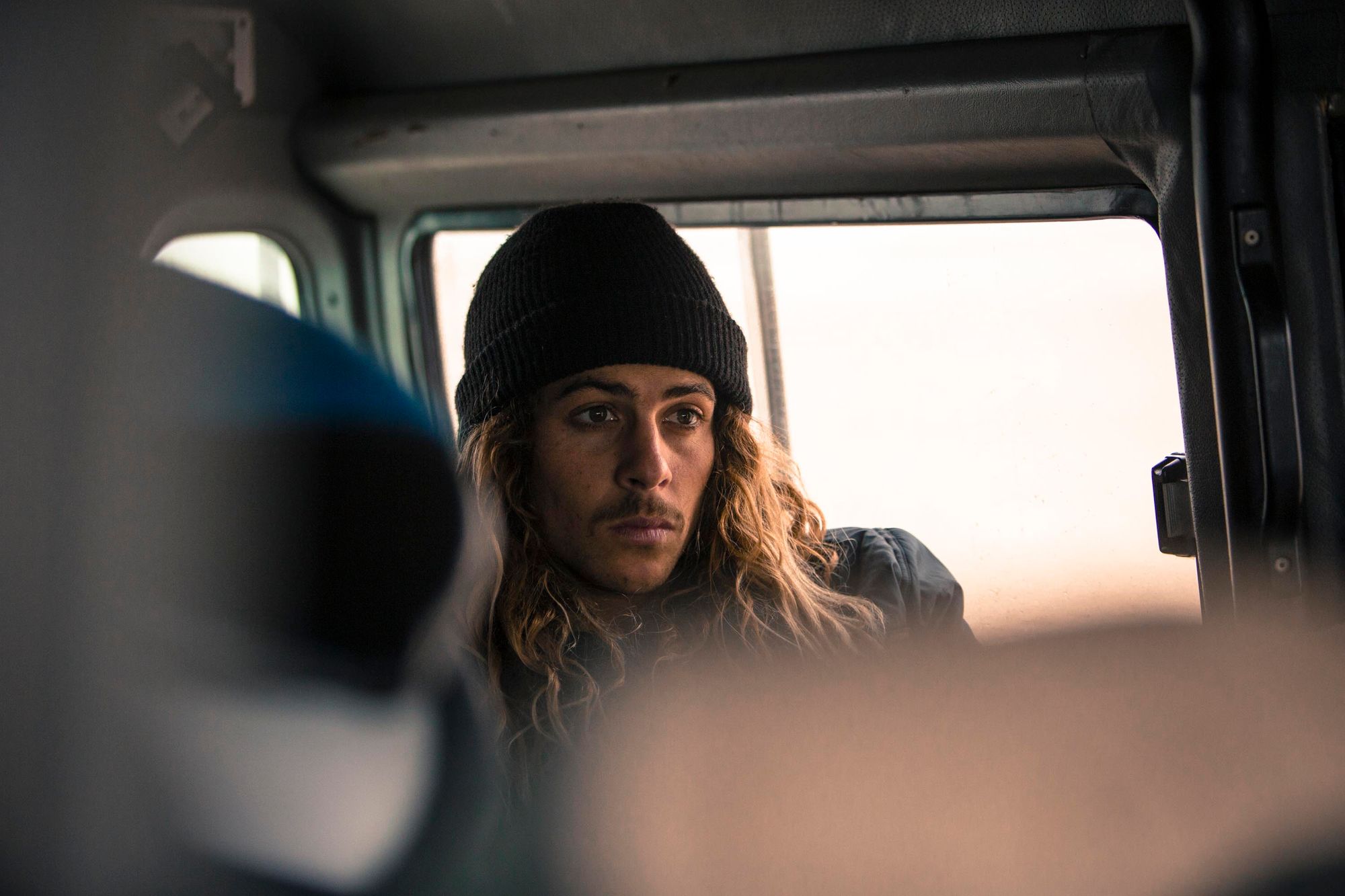
Funny enough, while photographer Alan (Van Gysen) was behind the wheel in one vehicle with Craig, the follow-4x4 was being driven by another South African named Etienne Potgieter. Although one of Etienne’s early trips to the fabled wave, he was inadvertently laying the foundation to becoming a trusted surf guide in the area. One, who besides being able to actually fly there on his own as a commercial pilot, could also surf the wave expertly and develop an intricate network of connections.
It's humans like these, though, that are the key fixers and unseen producers behind some of the great surf films and surf moments in our collective surf consciousness. Indeed, without them, there’d be no magazine feature, no motion picture.
We caught up with AVG and Etienne to get a little backstory on that iconic trip (check out the photos) and what exactly goes into the culture of surf guiding. Hint: it’s mostly about being a likeable, good human.
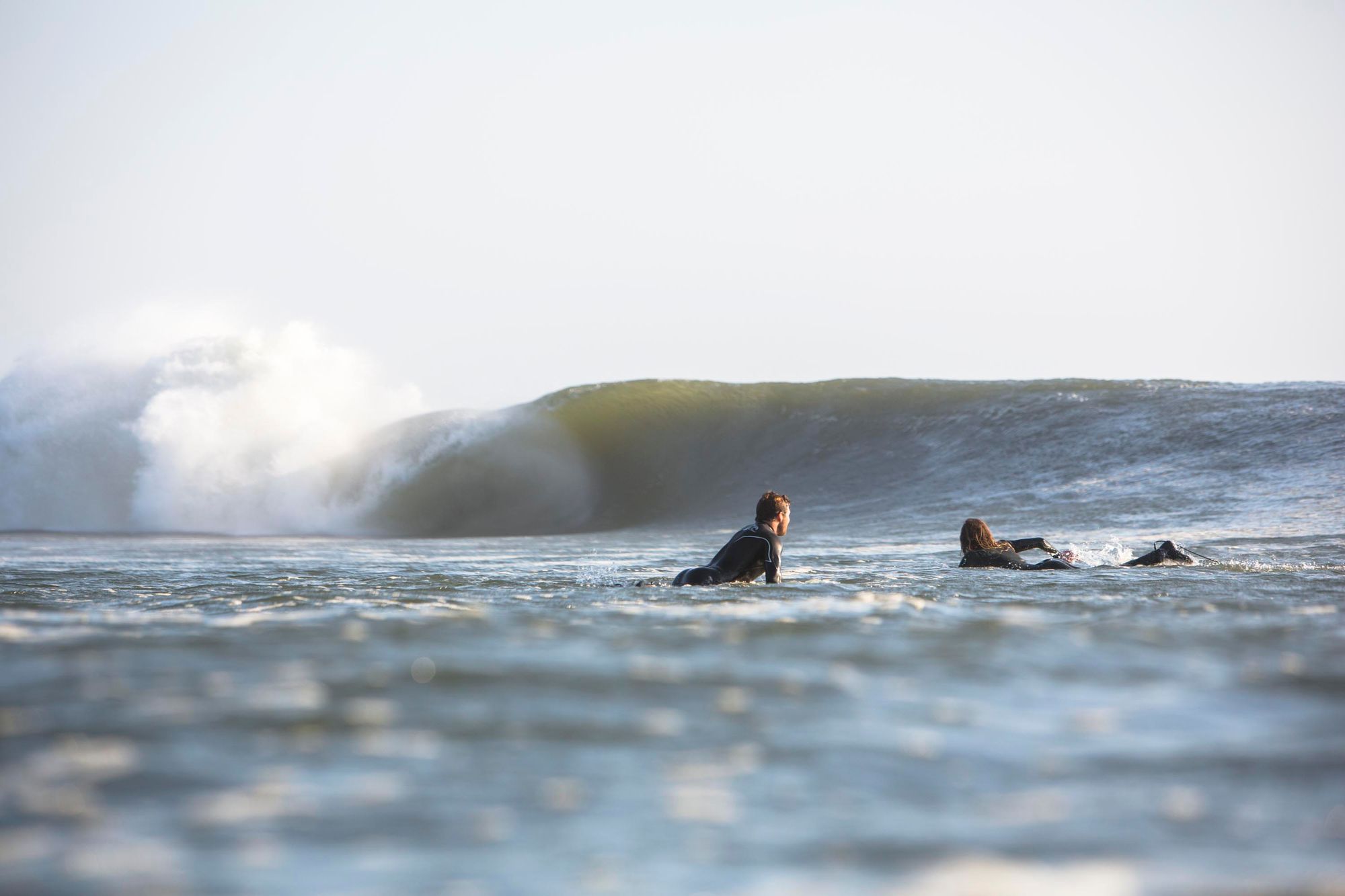
Thermal: Talk to us about that swell and experience, which the world would eventually see in Slow Dance…
Etienne: That trip was honestly the best I’d ever seen it. There were so few sections and you could get so deep, it was unbelievable. There would be three barrels down the whole entire point. That being said, Skeletons is so sand-dependent and it changes every year. But, the sand was just perfect on that trip. However, a bad day at Skeletons is pretty much perfect anywhere else. I’ve had trips where I’d gone to Skeletons, got barreled off my face, then gone home packed my bags for the Mentawais and didn’t get nearly as good of waves.
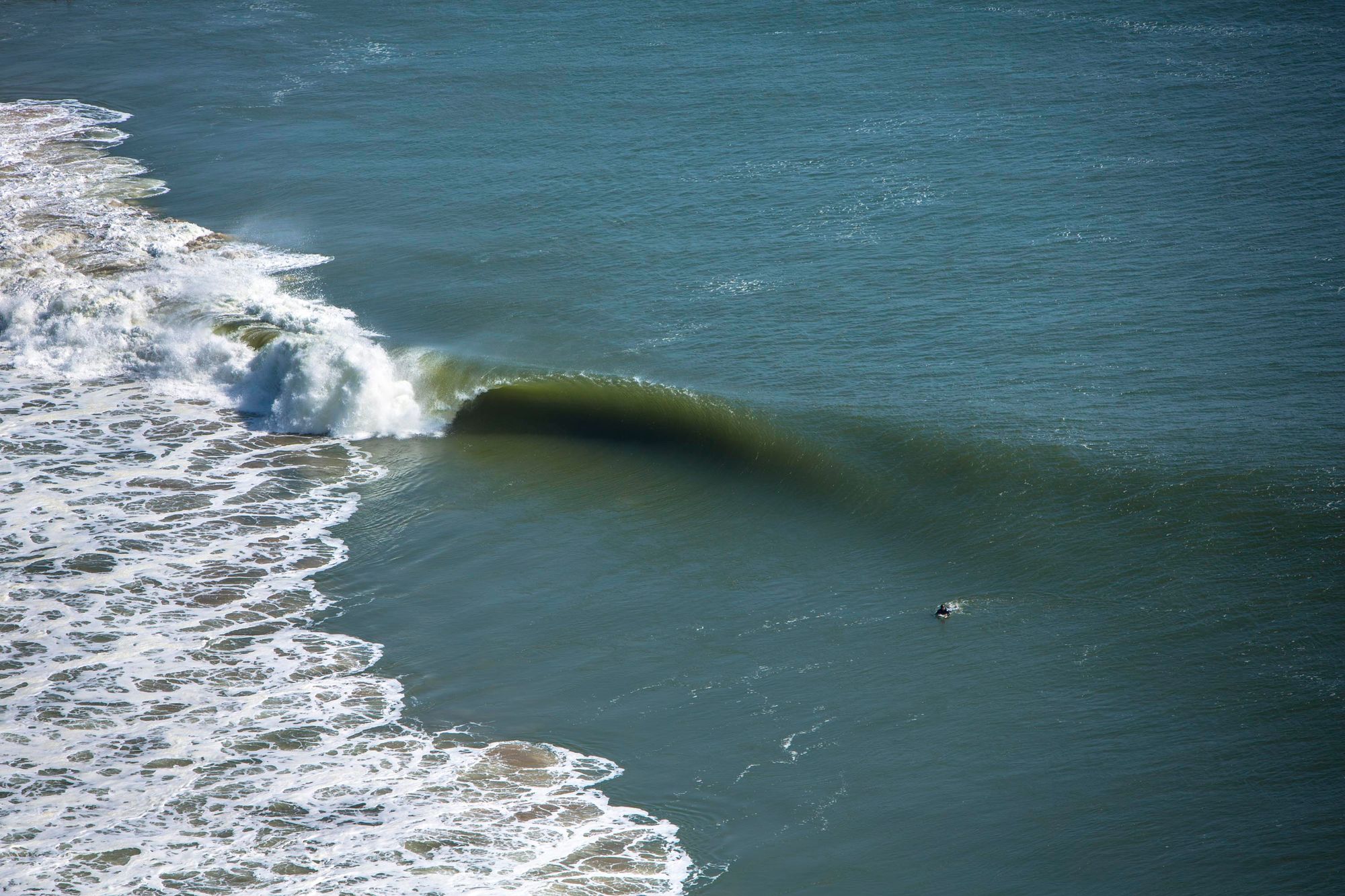
Alan: That 2012 trip…I think there’s only a handful of times in one’s life at a certain wave or location that become massive historical watershed moments. The ones that become timeless… Like Curren or John John or Slater at a wave and it becomes the benchmark almost for the type of surfing done there. It’s one of those moments in surf history that everyone remembers and I think Skeleton Bay, with Craig Anderson and Slow Dance, that was that for us in Namibia. We’ve had swells there with Koa Smith and one in 2014 that was the biggest I’d ever seen and while that’s the benchmark of size, I think the trip in 2012 with Craig was so special because every good part of what makes Skeleton special was happening. We had the right wind, the right swell, the right swell size, it was still not crowded, we had one of the world’s most stylish surfers there, we had a helicopter (which was mind-bending because we got to see it from the sky before drones were even a thing) and then also being able to record it for everyone to see as a film stamped it… So yeah, it was a historic thing.
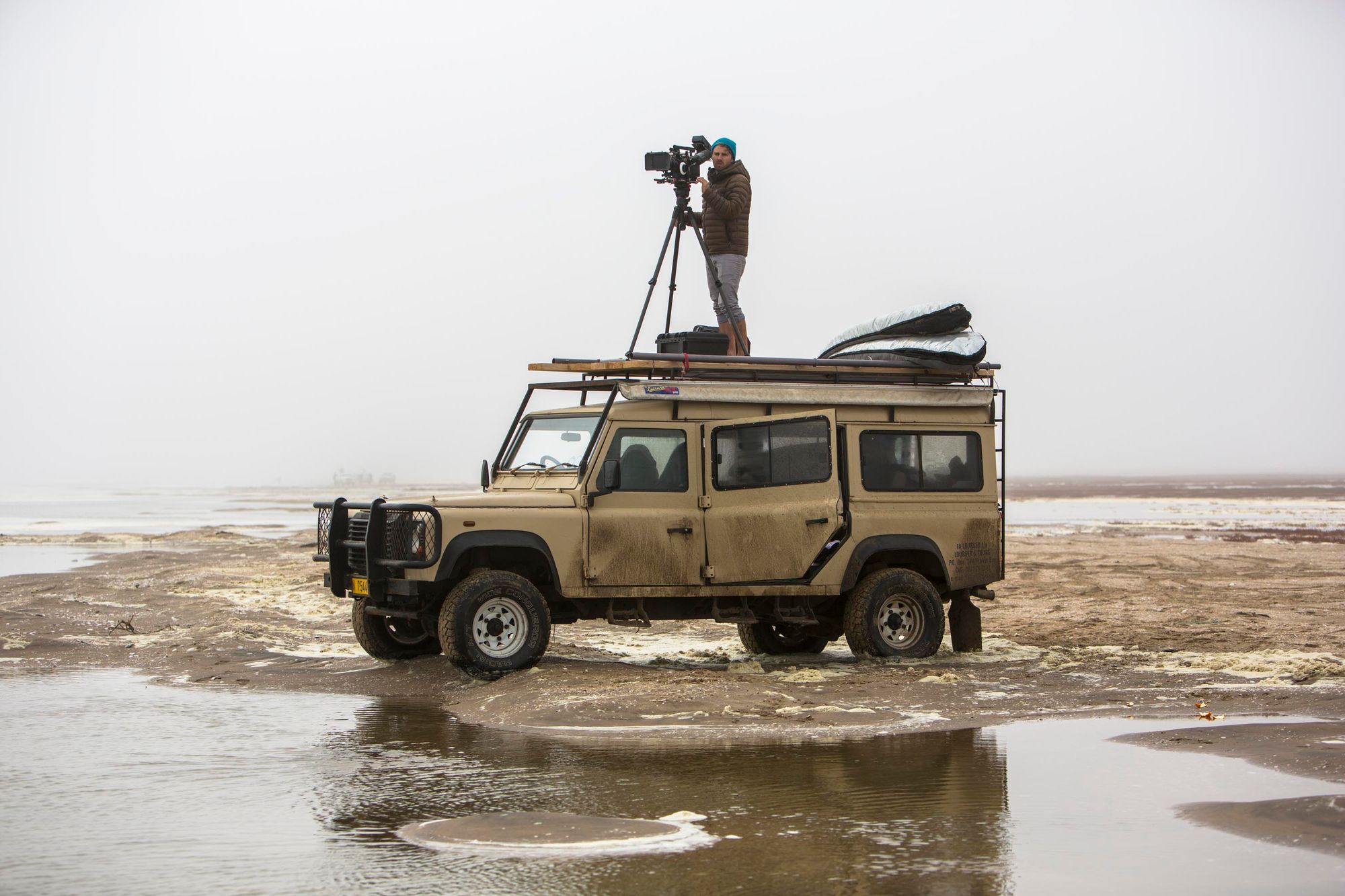
I still laugh because Craig was trying to get Kelly Slater to come and he was supposed to but pulled the pin at the last minute and afterwards he heard about it and told Craig not to send him any footage because he might want to kill himself for missing that swell. It got everyone wanting to be there.
Unreal. And talk to me about needing a surf guide for a trip like this…
Alan: I’ve said this before to guys like Dane Reynolds and Craig Anderson, but you really can’t do a trip anywhere in the world like this without connections and contacts. All the work that I’ve done over the years as a producer and fixer and surf guide — I’d be nothing without the relationships I’ve built in different countries. Whether that’s Namibia or Ivory Coast or Ghana or wherever it might be, I’ve spent years building relationships with people that have accommodations, or who have got cars, or airport transport dudes, or people that have got restaurants… You build this network of people and relationships along the way. Sure, those people provide a great service, but really they provide a great connection. And I think people and connections and those kind of relationships are everything in life. I always say that. So when it comes to surf guides, that person is one who is astute enough to find those connections and relationships and forge ones that last for years so that when you want to do a trip — boom, you can connect with those people, book tickets, and show them where you need to go.
So yeah, I think with surf guides it’s imperative to have those connections. It’d be so much more difficult for surfers to go to some of these places without them, and let’s be honest, when people travel, often they’ve often only got 10 days to 2 weeks to do it, so they can’t be trying to figure this all out on their own. It helps so much to have a person that’s done the homework already and knows where a great place to have lunch is, where the best surf spots are, accomodation, and where it’s safe. Other things too, of course beyond surfing. Like where a great waterfall is or viewing platform…it’s those types of things that a great surf guide can give you.
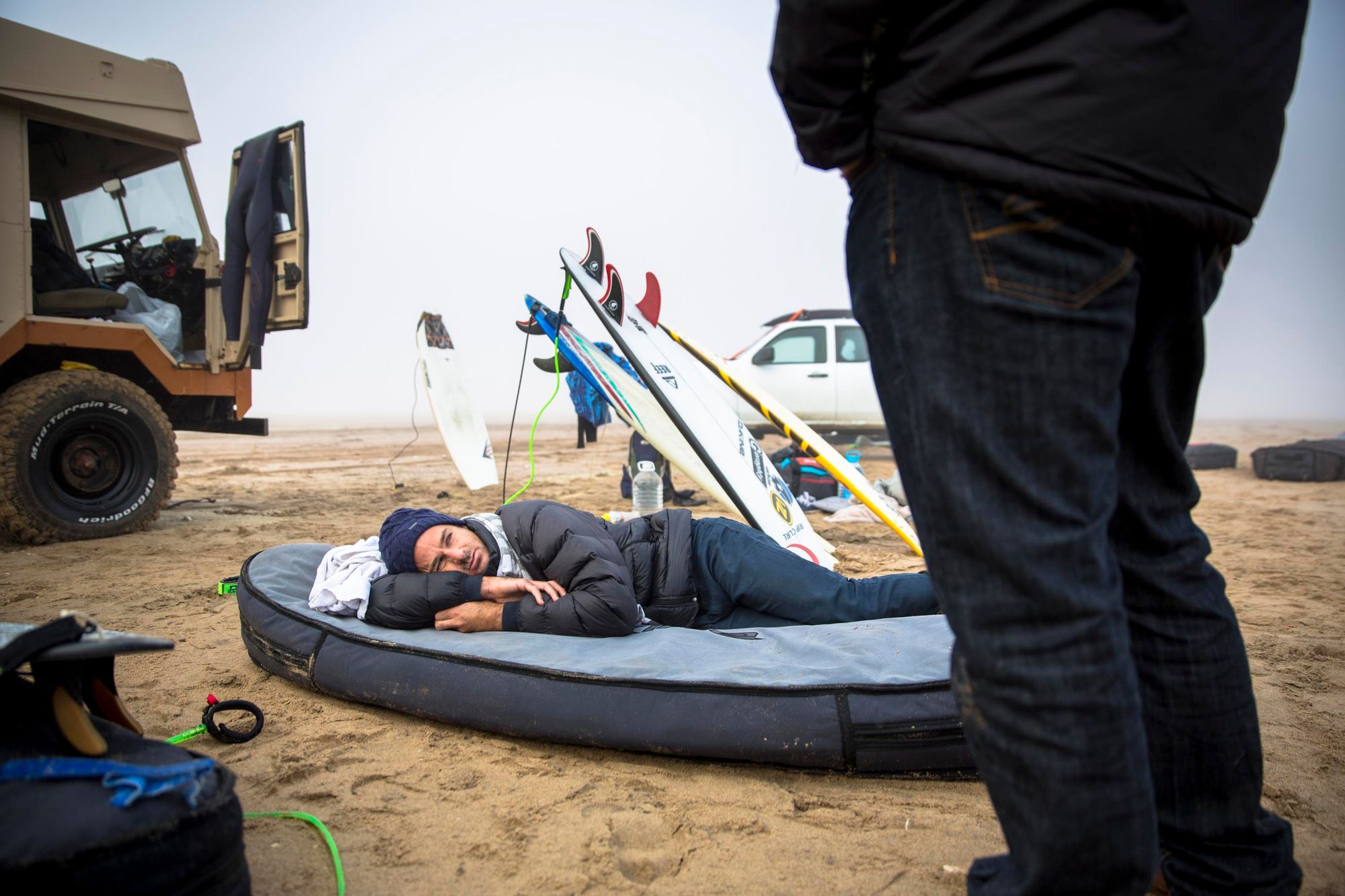
Etienne: Anyone that’s been on a significant surf trip knows that when you go on a surf trip on your own, it can be a bit of a stab in the dark. You roughly know what’s going on, but there’s a lot of “figuring it out,” Often it’ll be the end of the trip and you bump into someone who’s like, oh did you check this thing out? And you’re like how did I notgo there!? Skeleton is a very different wave, so a guide can help you wrap your head around it. It’s such a different approach and little things can make a huge difference. The tricky part with Namibia, too, is there are only a handful of swells that get that perfect angle for the wave. Africa can be challenge, as a lot of developing countries can be. So, if you’re going with someone that knows exactly when to make the right call and knows how everything lines up, the ins and outs of a place, how could that not benefit you?
Plus, if you don’t know where the wave [Skeleton Bay] is — you’re not gonna find it. Simple as that. It’s like, are you proficient at driving 4x4 through sand? That’s a must over there. Not a lot of people are. You can wing it, but it can go badly. Also, it’s a heavy wave, so if things go wrong, to need to know how to get yourself out of some heavy situations. All these things come from experience and being there a lot.
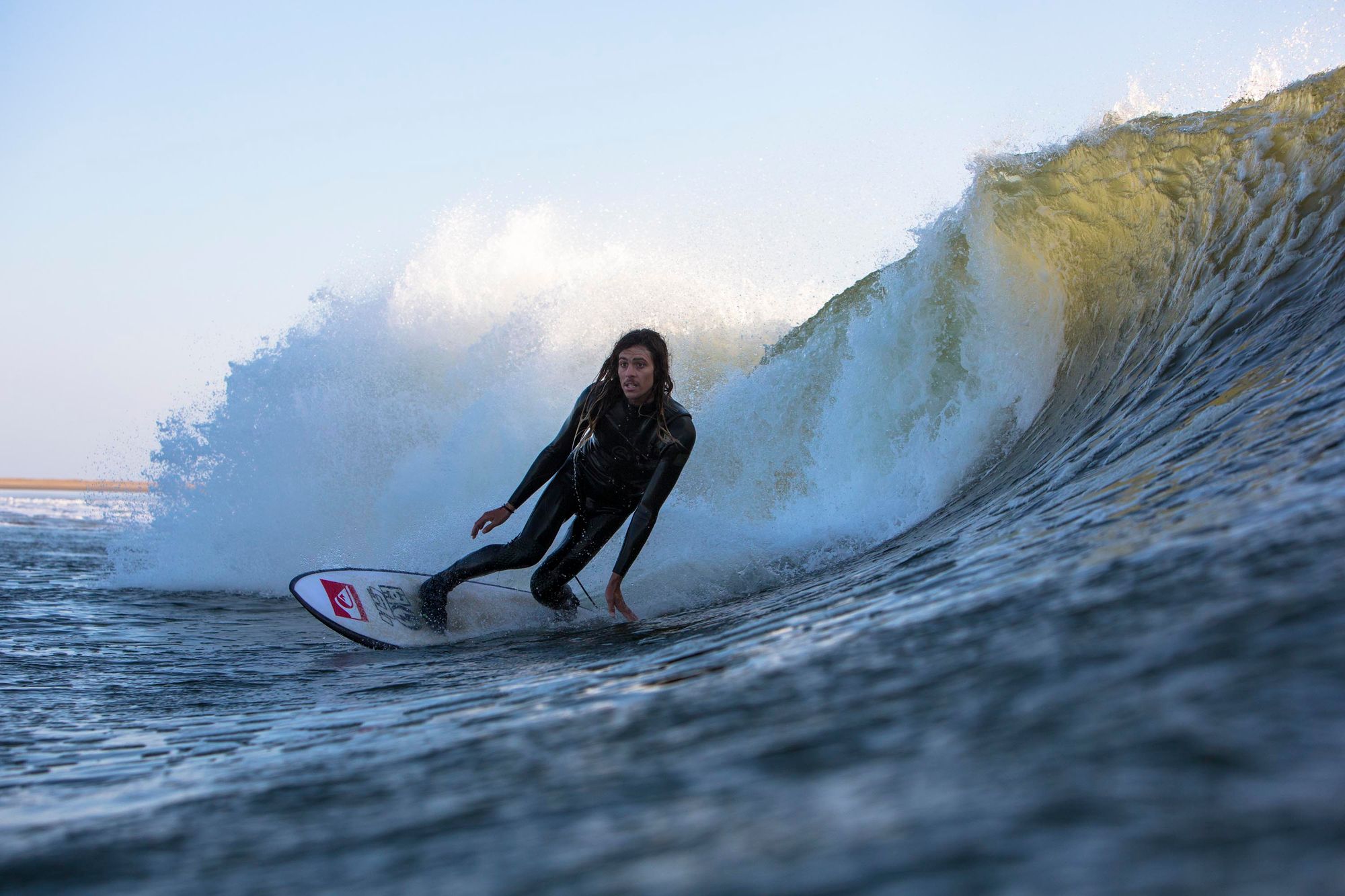
Since that trip with Craig and SURFING magazine to Namibia for the Slow Dance movie your guiding career has grown right, Etienne?
Etienne: I’ve known Craig since he was a little dude in Port Elizabeth and I was a Rip Curl team rider and had done a lot of trips with Alan. I had been to Indonesia with Alan, too. I also went on the first trip with Zig Zag Magazine to Skeleton Bay to document it (after the Google Earth Challenge) with Alan around 2010-ish. That was the first time I’d gone there and learned about it. From that point on I kept going back. Being a commercial pilot, it was very easy for me to leave my home in Port Elizabeth, South Africa, be down at Skeletons by the afternoon, and then be back the following day. So, I used to do about 4-5 trips a year. Basically, if I wasn’t working and there was a swell — I’d go. I’d stay in the same B and B there every time, I still do, and I even leave boards there. So, now when I go I don’t even bring boards anymore, they’re already there.
I fell into the guiding part. Basically, I was going every year since 2010 and then my phone would start ringing, often from guys that hadn’t been before and I’d tell them, book a flight and I’ll take care of the rest. So that started happening a lot. Eventually, it was like, I needed some extra income, people had an appetite to be guided and know what to do, where to eat, where to stay, and I definitely could provide that.
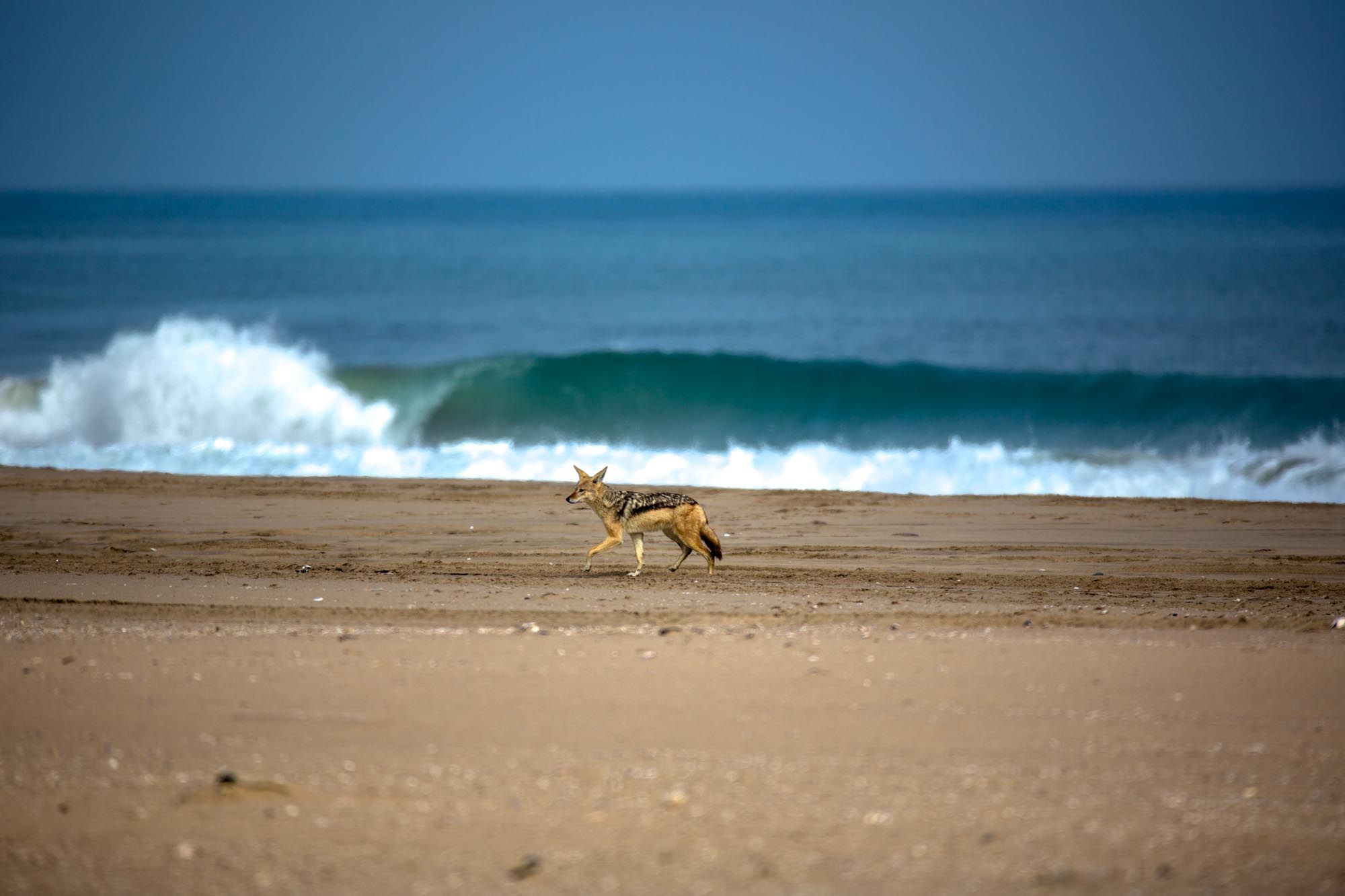
Alan: I’ve done many trips with Etienne back to Skeleton Bay. I have gone multiple times a year since then. Unfortunately, the last couple years there haven’t been a lot of big west swells which is what those places need. So yeah, since then Etienne’s really solidified his contacts there, and also he was an airplane pilot and has flown all around Africa, so he has a great sense of these places and connections there.
You need to connect with the place and people and the culture and that’s really where the gems and the rewards of travel come. It really becomes the experience and not a headache.
One thing I’d like to add is that sometimes surfers fall into the trap of going to a place just to surf. They get in, get out, like on some of the Mentawai boat trips where you barely see any locals and don’t experience the place. So I like to remind people with a trip like this that you need to immerse yourself 100%. You need to connect with the place and people and the culture and that’s really where the gems and the rewards of travel come. It really becomes the experience and not a headache. Then it’s like, if something goes wrong, that person you met on the bus yesterday and got their number — they very well could be the one that bails you out of an issue tomorrow.
So yeah, immersing oneself properly while traveling is important and I think a surf guide is that connect for you as well. Surfers should be open to that. I think it’s beautiful that when we travel somewhere, we can in turn invite and have someone we met on the other side of the world come to our homes and out countries and we can share experiences with them. That’s where the beautiful connect happens and is reciprocal.
Surf Skeleton Bay with Etienne
